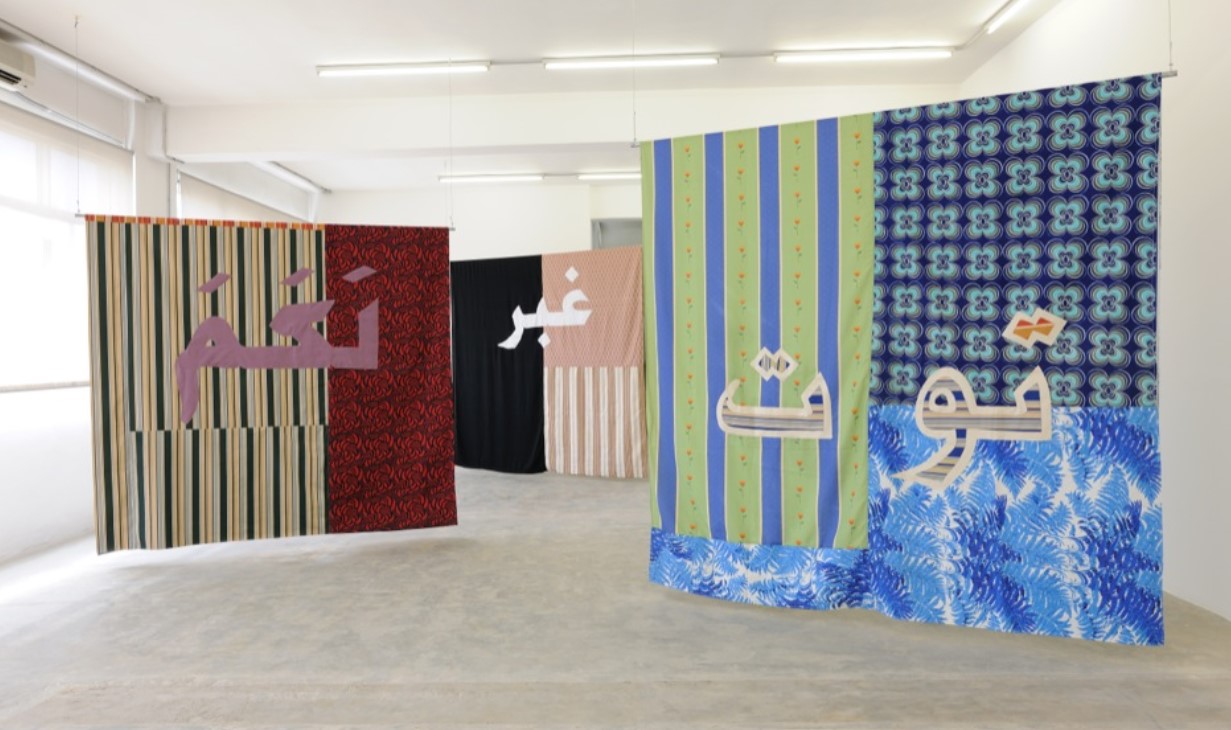

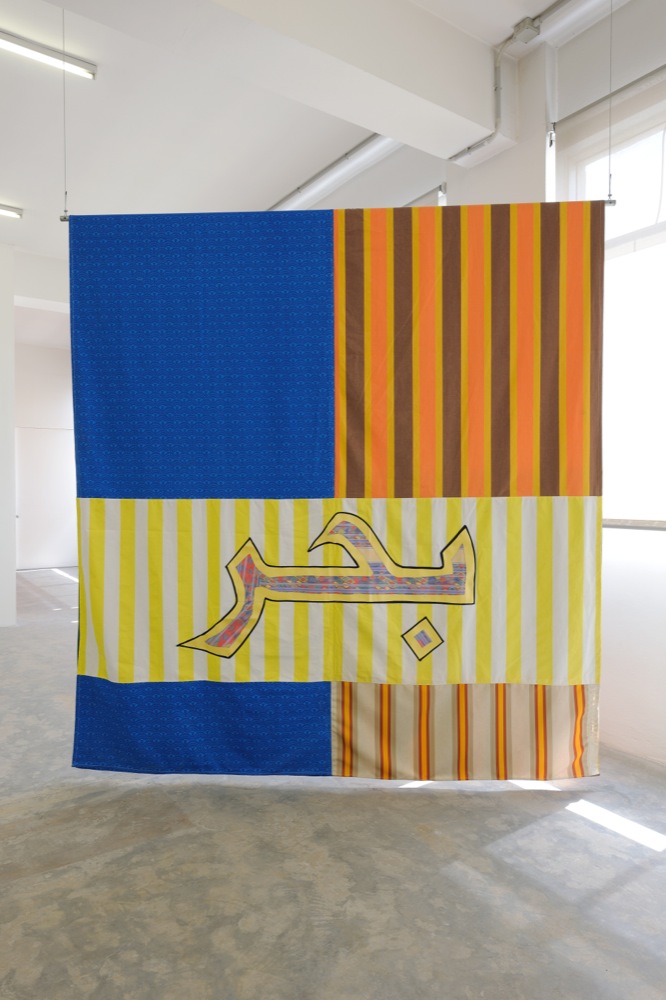
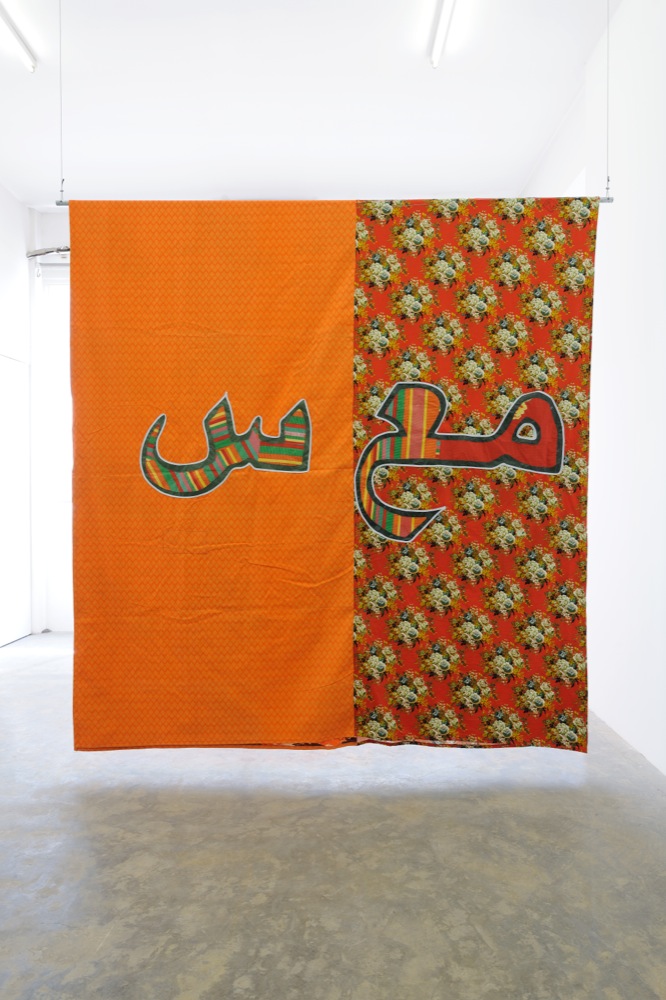
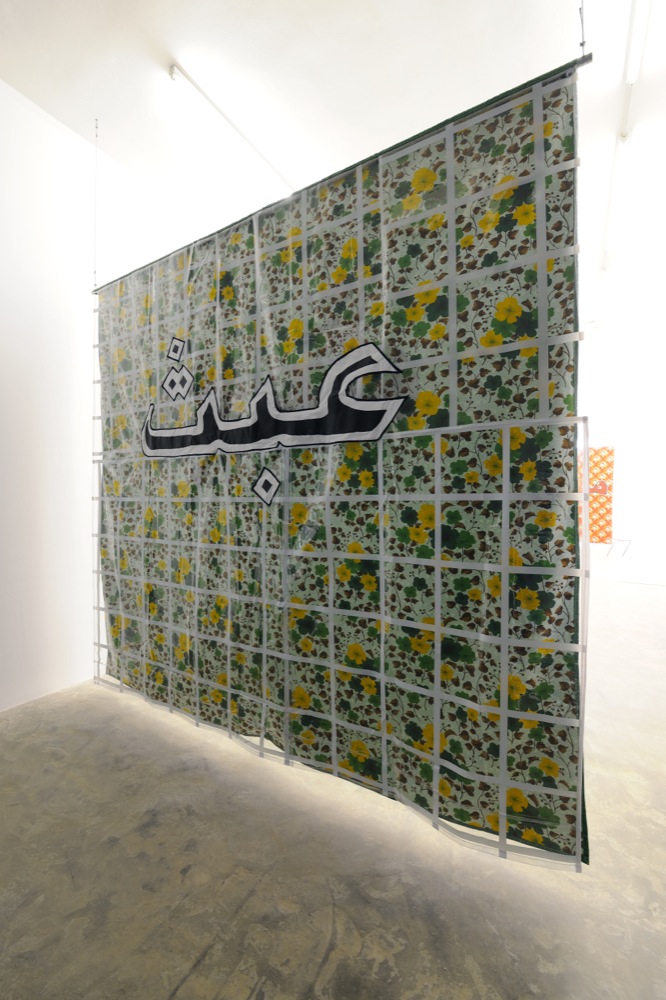
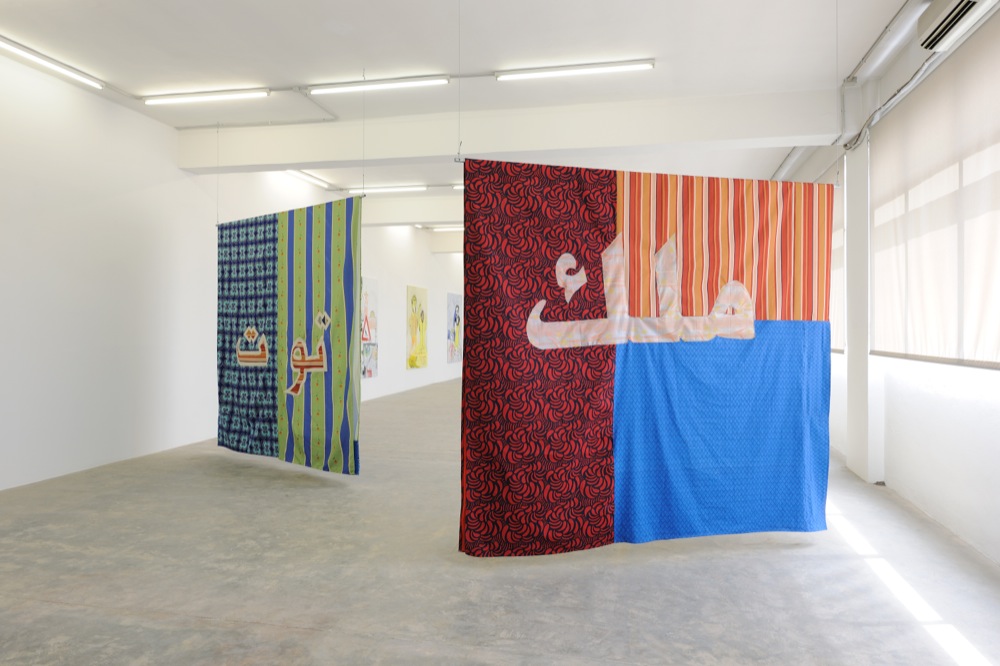
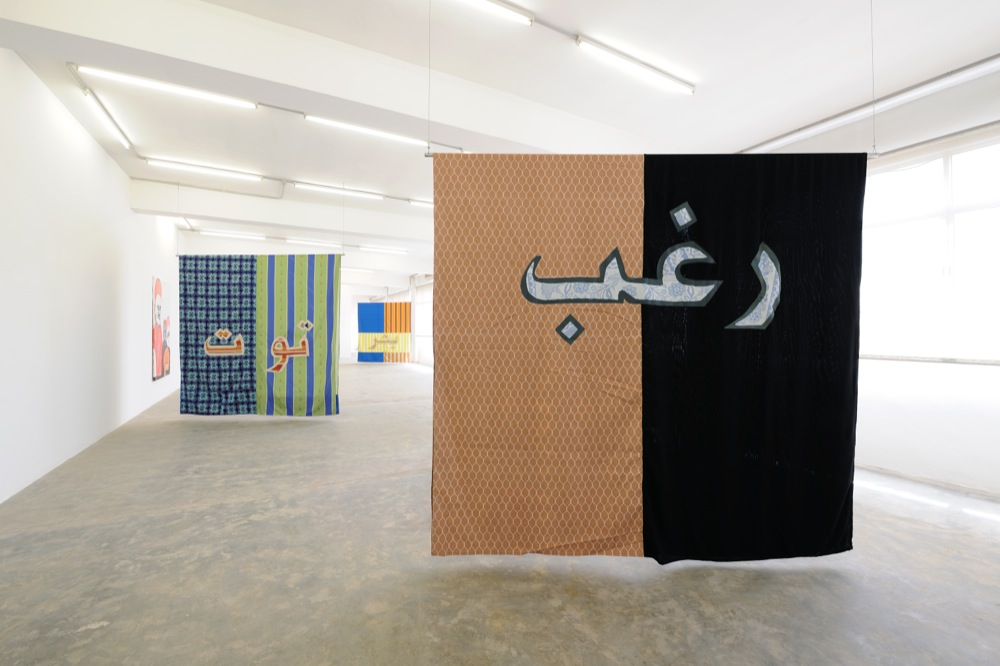
Heard/felt سمع/معس
These huge suspended double-sided patchworks are a playful reflection suspended between space and language based on the three letter word roots in the Arabic language. These suspended-like reflections are resulting from a linguistic research based on readings of Lebanese sociologist and linguist Ahmad Beydoun.
In his chapter “the imaginary of letters”, Beydoun compares the meaning and origin as well as the choice of Arabs for certain letters and how these are pronounced and what meaning they generate, comparing and denying at once thoughts on the meaning of letters by Al Alayli and Al Chidyyaq, both prominent Lebanese linguists and translators.
Why did Arabs choose the letter “m” where lips are bound together for plural for instance? And “n” for indicating the female plural for instance? Etc..
On each side of each suspended patchwork we read a three-letters’ word, often allowing different readings of the same word.
Here below are the details:
1- Raghab/Ghabar: Raghab, or Raghiba means desire, or to desire), the three letters are shuffled around and we read Ghabar, which means dust, or to vanish.
2- Malik/Lakam: On the first side of this curtain we read Malik, or malaka, which means the king, or to own, and the letters MLK are the base of Ahmad Beydoun’s book where he states that the letters KLMN in the Arabic The alphabet came in the same sequence of the same letters in the Syriac alphabet and the Phoenician, and many following alphabets have kept the same order of those letters in their alphabets, such as the Greeks and the Arabs. He states that the word “Elementum” in latin was constructed in that way, according to Georges Mounin in Histoire de la linguistique. So it’s as “KLMN” is the elementum of language, and therefore in Arabic it names “Al Kalam” in Arabic which means words or more broadly language in this case. And therefore a king “Malik” is very proud to have the three letters MLK in his name, he will be like the king of kings according to what Arabs say.
The second side of this curtain “Lakam” or “Lakm” means to punch, and that is a word constructed by shuffling around the three letters of the King’s name in Arabic. Lakam alludes to our current kings and their totalitarian behaviors.
3- Tout/Tout: Less common and not really known is “Tout” as the first month in the coptic year. But most commonly Tout in Arabic means berries, and Tout is the sound of sensuality of bad words on TV for instance. Tout is also an onomatopoeia for a car’s horn.
4- Baher/Hareb: This is the most simple and childish word play amongst the patchworks curtains, on one side we read “Sea”, on the other we read “War”.
5- Samaa/Maas: Samaa is listening or to listen, it is also related to music, or to obedience, or patience (among many other meanings). Maas means to smash most commonly, but it also means to have a sexual intercourse (not common or not so known meaning). Maas is also related to work on the skin of sheep.
6- Baath/Aabath: to give the most simple and common meaning of Baath, we can explain it as to emanate, it also means the day of the Qiyamah, but also, it is the name of the Baath party. Abath means Absurd according to the most common meaning in Arabic. As for Baath, here is a more detailed explanation in Arabic according to Lissan Al Aarab encyclopedic dictionary:
He sent him, he sends him, he sent him alone, and he sent him, he sent him with others, and he sent him also, i.e. he sent him, so he sent him. And you are the one whom you sent to creation, that is, you sent him, in the sense of the object, and in the hadith of Ibn Zamaa, the most wretched of them was sent, it is said that so-and-so was sent for his If he revolted and went on going to relieve himself, and the Messenger was sent, and the congregation was sent, and the delegation sent the soldiers to the invasion, and the resurrection was the embodied people, and it is said that they were resurrected in Sukoon al-Ain, and in anecdotes it is said that the Levant sent us a caravan. So they sent passengers to her And the interpretation of resurrection is the removal of what was holding him back from disposition and emanation, and he was resurrected in walking, that is, faster, and a man who was resurrected a lot from his sleep, and a man who was resurrected, resurrected, and resurrected, and his worries continue to haunt him. And you raise him up from his sleep. Humaid bin Thawr said, “You run with disheveled hair, and it is his robe. Woe to us who raised us from our dorm? This is the endowment of completeness, and it is the saying of the polytheists on the Day of Resurrection, and the Almighty said, This is what the Most Gracious promised, and the messengers believed the saying of the believers. That is, God sent us from our resting place, and the resurrection in the speech of the Arabs is in two ways, one of which is the dispatch, as the Almighty said, then we resurrected after them, Moses, which means we sent, and the resurrection is a blessed excitement or sitting. Revolted and resurrection too
